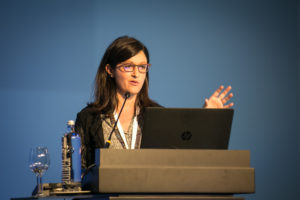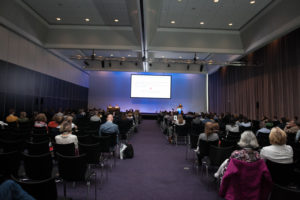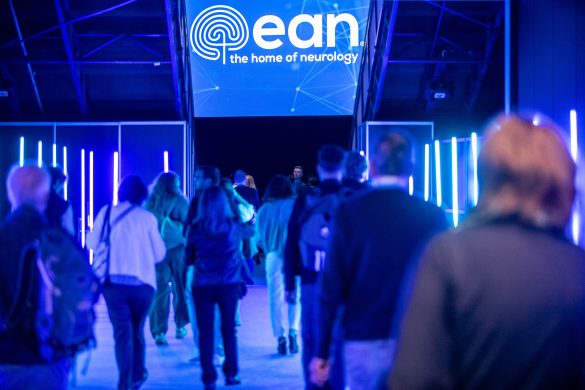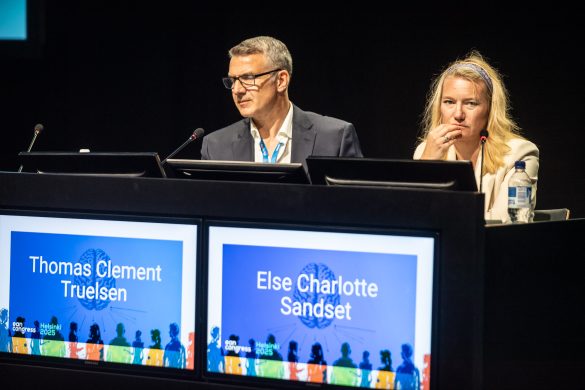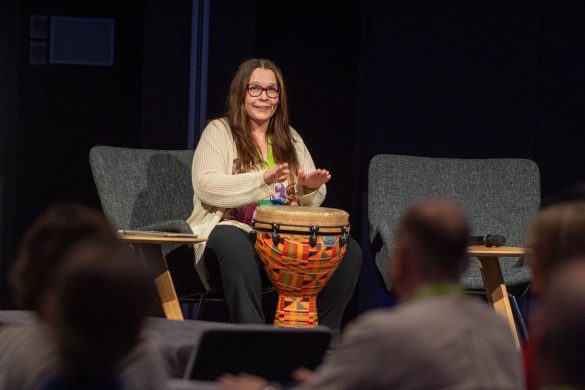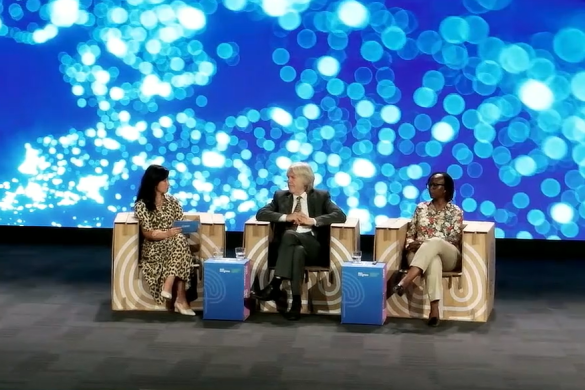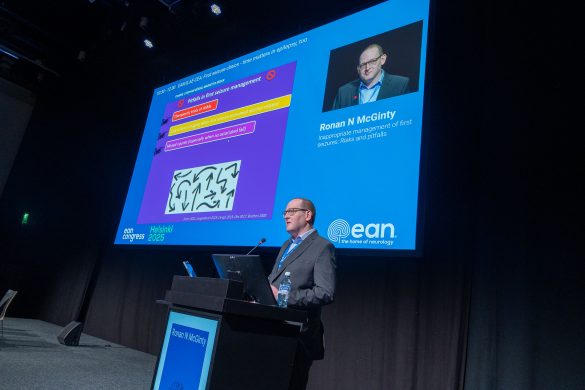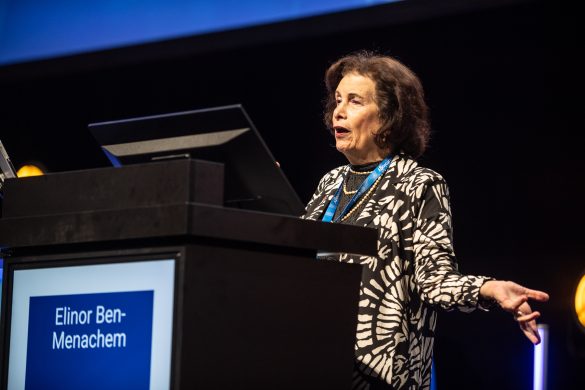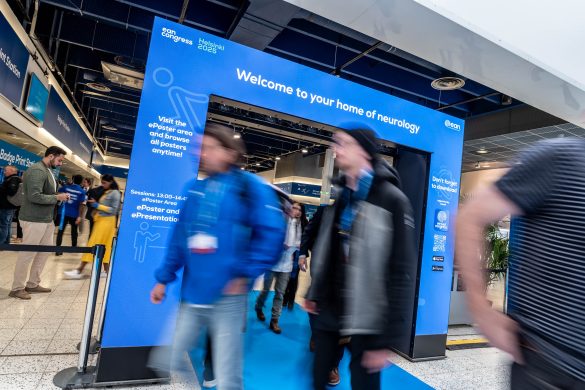Symposium 6: Amyotrophic lateral sclerosis (ALS) and frontotemporal dementia (FTD) as a model of interaction between cognition, behaviour and motor impairment
Chairpersons:
Albert C. Ludolph, Ulm, Germany
Yolande A.L. Pijnenburg, Ouderkerk aan de Amstel, The Netherlands
- The neuropathology of ALS and FTD
Manuela Neumann, Tübingen, Germany - Neuroimaging in ALS and FTD
Federica Agosta, Milan, Italy - Genetics
Jan Veldink, Utrecht, The Netherlands - Clinical interactions
Albert C. Ludolph, Ulm, Germany
ALS and FTD are fatal neurodegenerative conditions for which new treatments are urgently needed, but incomplete understanding of pathophysiological mechanisms remains a major barrier. However, considerable progress has been made in recent years and this was the subject of the symposium. ALS and FTD have been shown to share a common pathophysiological substrate in the majority of patients, namely TDP-43 proteinopathy, and C9orf72 mutations can result in either motor, cognitive and overlap phenotypes.
Manuela Neumann from Tubingen described her discovery (published in Science in 2006) of mislocalised TDP-43 protein, which is normally found in the nucleus but mislocalised to the cytoplasm in disease, in an abnormal N-terminal truncated, hyperphosphorylated and ubiquitinated form. Evidence for the presence of different “strains” of TDP-43 in the cerebral cortex and spinal cord was discussed as a possible determinant of clinical phenotype, and hypotheses of the prion-like spread of TDP-43 protein were considered.
Federica Agosta from Milan then described the insights obtained from imaging ALS and FTD patients in vivo. Grey matter atrophy is found in motor areas in ALS and in frontotemporal regions in FTD, and correlates with clinical measures. Phenotypic overlap is again seen, with extramotor areas involved in ALS and motor area damage evident in FTD. Cerebellar and thalamic involvement are also seen, especially in C9orf72 ALS. White matter changes are prominent in the corticospinal tracts and corpus callosum in ALS and an anterior to posterior gradient is found in FTD. White matter appears to be more sensitive to longitudinal change than grey matter. Imaging data has contributed significantly to current network-based hypotheses of degeneration.
Jan Veldink from Utrecht then took us through genetics, describing common single nucleotide polymorphism (SNP) variation at one end of the scale and, at the other end, rarer mutations that cause Mendelian disease. The concept of a spectrum of genetic influence on the disease was introduced, and the liability threshold model described, in which the cumulative burden of multiple common SNPs may eventually cause an individual to develop the disease. Evidence exists that apparently sporadic diseases are frequently caused by this mechanism. Modelling approaches suggest that ALS development is a multi-step process, probably involving six steps, each of which may be genetic or environmental.
Albert Ludolph from Ulm concluded the session with a discussion of clinical interactions. The discussion focused on hypotheses of disease staging using the spread of TDP-43 pathology, progressing from motor to extramotor areas in ALS and from anterior to posterior regions in FTD. The recognised clinical pattern of contiguous disease spread (for example, from right arm to left arm or from right arm to right leg in an individual patient) was considered, as was the question of whether prion-like propagation along anatomically contiguous neuron groups at spinal or cortical level could be responsible. Central patterns of weakness were discussed, and it was noted that vulnerable muscles in ALS tend to exhibit monosynaptic motor innervation. Striking weight loss is seen in some ALS patients, and imaging data have recently emerged which suggest that hypothalamic atrophy may be involved.
So progress has been made, and the hope must be that it will be possible to build on these pathophysiological insights in future and further refine them on the basis of continuing methodological advances in pathology, imaging and genetics, in order to develop novel treatment approaches.
by Tom Jenkins
